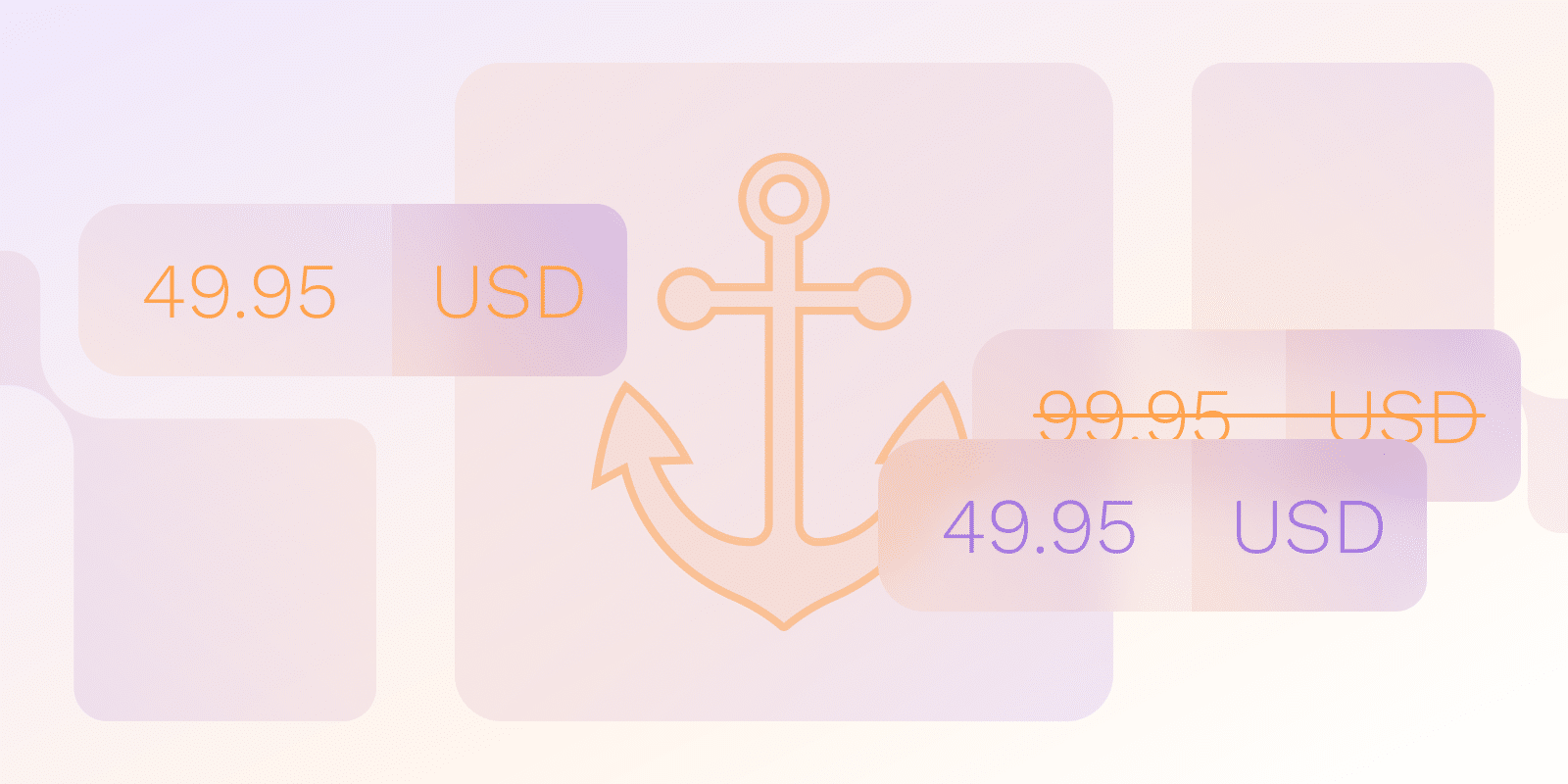Pricing Tactics
What is SaaS Price Anchoring?

What is SaaS price anchoring and how does it work?
Price anchoring is a psychological pricing tactic where SaaS companies establish a high initial price, also known as the anchor, and later emphasize a discounted price.
This strategy functions because the human brain heavily leans on the first information piece to make assessments.
How can SaaS companies use price anchoring to set optimal prices?
SaaS companies can employ price anchoring to set the most appropriate prices for their products as long as they consider several aspects.
The tiered pricing strategy is one of them. Because the potential clients are given different options to choose from, including a costly one, the rest of the offers seem better.
Then there is the decoy pricing method, where the SaaS company guides the buyer towards the right option by framing it amongst higher-priced options.
Lastly, there are the discounts, which are displayed to the audience.
Should SaaS companies use charm pricing as a form of price anchoring?
Having prices that end in 9, 99, etc., is a way to anchor the price, but SaaS companies should seriously consider this approach. While it can impact purchasing decisions, it can also affect brand recognition.
Scarcity marketing is an option in case price anchoring is not a suitable option for your company.
How does anchoring affect consumer psychology in the context of SaaS offerings?
Price anchoring can impact consumer psychology. And there are two ways in which it happens.
Due to the manner in which the offering is framed, having the high price as a reference point, your audience target will think in terms of saving rather than the absolute cost.
And there is also a sense of urgency. Price anchoring mixed with limited-time promotions or comparative pricing (the practice of showing a higher price alongside a lower one to emphasize a sale) triggers the fear of missing out. This leads to purchasing decisions.
What are some practical examples of price anchoring in the SaaS industry?
Here are three real-life examples of SaaS companies using price anchoring as part of their strategy:
- Convert: This A/B testing and CRO (conversion rate optimization) platform uses price anchoring combined with charm pricing. All of their packages have prices ending in the number 9, with the lowest one positioned on the left.
- Dropbox: This cloud storage and file synchronization service has different pricing plans, with the middle promoted to possible customers.
- Hubspot: This SaaS software’s sales hub establishes its enterprise package as the anchor, the most expensive option, making the professional plan the preferred choice for consumers.
| Company | Product | Pricing Strategy | Key Anchoring Technique |
|---|---|---|---|
| Pricing Example Comparison | |||
| Convert | A/B Testing Platform | Charm Pricing | Prices ending in 9, lowest price on left |
| Dropbox | Cloud Storage | Tiered Pricing | Middle plan prominently promoted |
| Hubspot | Sales Software | Enterprise Anchoring | Enterprise package as high-price anchor |
Conclusion
In the SaaS landscape and not only, price anchoring enjoys popularity among businesses. It is a well-known tactic for influencing a customer’s perception of price. This approach can be utilized to influence prices and conversions, but it’s relevant to point out that it can also impact brand recognition.